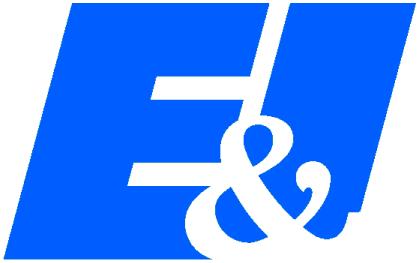Although focused ultrasound makes up the largest percentage of their business, it is only one of the many innovative industries for which E&I builds highly technical radiofrequency (RF) equipment. We interviewed E&I President, Tony Harris, and Vice President of Sales, Jeff Keller, to learn more about a company that has been working behind the scenes of the focused ultrasound industry for 16 years to build the “rugged and reliable” RF amplifiers that launch new ideas and new companies.
Where is your company located?
Our offices and manufacturing facilities are located in Rochester, New York, USA, but E&I is a global company. We have distributors and service centers strategically located across the globe to support every worldwide customer. Our headquarters in Rochester includes an office area, a production floor, and a testing and engineering area plus a stock room and warehouse.
How was your company started?
E&I was started by four executives who left a company called Electrical Navigation Instrumentations (ENI) in 2003–2004. After ENI was purchased in 2001 by MKS Instruments, Inc., it stopped manufacturing broadband amplifiers, and this decision created the opportunity to start E&I, which stands for Electronics & Innovation, Ltd. The Board consists of Tony Harris, Hisami Nishio, and John Stratakos; all former ENI executives. We have maintained a working relationship with customers who to this day continue to use ENI amplifiers.
How did you get involved in starting or joining the company?
Tony: I worked as VP of Engineering at ENI, but after the acquisition by MKS they decided they didn’t need me anymore. I recognized that there was still a need in 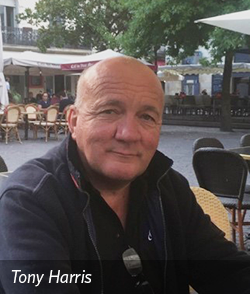 the field for linear amplifiers, so I started E&I.
the field for linear amplifiers, so I started E&I.
Jeff: I had pharmaceuticals sales experience, but I really wanted to get involved with a growing small business that had an excellent product. When I looked into E&I’s markets, focused ultrasound was by far the most exciting one. I have a personal experience with cancer and loved the innovation. It was an easy choice to join E&I.
What is your background in terms of training and education?
Tony: I studied physics in college and then began working with RF applications in 1983, initially in air traffic control. I joined ENI in 1997 to work on amplifiers and other similar products.
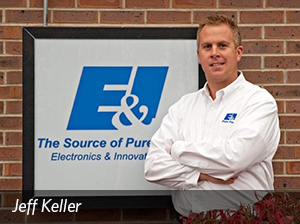 Jeff: I have a background in business management and marketing and jumped into sales right out college. When I learned that E&I needed marketing and sales assistance, I came on board and have been here 6 years now. I’m still learning a lot about electronics, RF, and ultrasound. I am learning on a daily basis.
Jeff: I have a background in business management and marketing and jumped into sales right out college. When I learned that E&I needed marketing and sales assistance, I came on board and have been here 6 years now. I’m still learning a lot about electronics, RF, and ultrasound. I am learning on a daily basis.
Tell us about your company structure: ownership, lead executives, and their roles.
E&I is a privately owned C corporation. Tony Harris is President, Jeff Keller is Vice President of Sales, and Bill Stenglein is Vice President of Operations. Our mission is to provide value to our customers, employees, shareholders, suppliers, and our community by ensuring that our transactions and interactions are carried out in accordance with the highest level of ethics, respect, and integrity.
In general, what is the current status of your company? How many employees do you have and in what roles?
E&I has been operating for 16 years and it has demonstrated year-on-year growth. Our sales in 2019 reached $1.7 million. We are off to a good start to this year and should reach $2 million in sales. We currently have 10 employees.
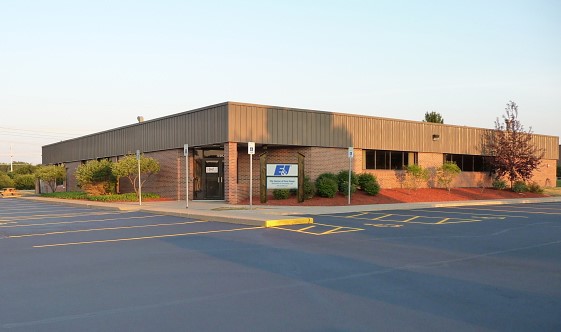 How has the COVID-19 pandemic affected your business?
How has the COVID-19 pandemic affected your business?
Our customers mainly consist of universities, research centers, and government laboratories. Scientists and doctors who conduct research have not been able to go to their laboratories. April was very slow for us. Because our products range from $5,000 and up, it can be an expensive piece of equipment when you’re not sure of the future. We are a small business, and we received a payroll protection program (PPP) loan. Hopefully business picks up soon. We are considered an Essential Business in New York, we continued to operate with a reduced on-site workforce to fulfill existing customer orders. As New York continues to open up, we are gradually bringing people back on site.
What other industries do you serve besides focused ultrasound?
Besides building and servicing therapeutic and diagnostic ultrasound amplifiers, we provide equipment and services for:
- Nondestructive testing (NDT), such as finding cracks in aircraft wings or oil pipelines, detecting corrosion on oil rigs and telemetry activation, and acoustic testing, such as detecting noise levels in hydroelectric power stations or fishing/herding applications.
- Marine navigation, communications, antenna testing, transmitters, AM/FM repeaters, and linear particle accelerators, which require very high frequency (VHF) and ultrahigh frequency (UHF) amplifiers with a range from 1 MHz to 500 MHz and components, such as cables, couplers, matching transformers, and custom RF passive products.
- Wireless power transfer, or wireless energy transfer, is a new and completely different application for our amplifier business. We are seeing a lot of innovation in that area right now (e.g., electric cars).
E&I fits in the innovative and research aspects of these industries. We like working with the ideas in the academic world that transfer into startup companies. Our benchtop amplifiers are considered the industry standard. We then collaborate with customers to customize our products for companies launched by researchers.
How do you describe your market?
Our primary market sectors are:
- Medical
- Marine Navigation
- Component testing
- Test & Measure
- Aerospace
- Communications
- Industrial
Our primary customers include academic universities and institutions, leading research facilities and laboratories, government agencies, and medical device manufacturers. Our equipment is used in focused ultrasound research around the globe. In fact, ENI/E&I has been supporting the focused ultrasound industry for more than 30 years!
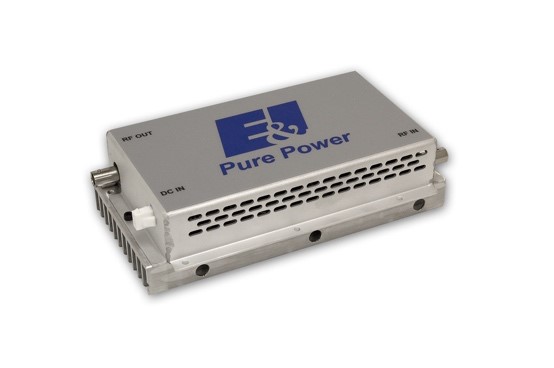 What are some of the technical challenges your group has to overcome?
What are some of the technical challenges your group has to overcome?
E&I develops a critical component within every focused ultrasound system. Our goal is to provide commercial systems with the RF sub-assembly, in a module form. The most common challenges are size, weight, and cost. The length of time from focused ultrasound system concept, to trials, to commercialization can be extremely long, so it is critical to us to support customer needs though each of these stages.
What challenges do you have to tackle moving forward?
One of our goals is to improve customer responsiveness by streamlining our research and development (R&D) activities. We also are in the process of designing and creating smaller, less expensive amplifiers.
What are the benefits of your technology over companies?
Our broad frequency bandwidth and high reliability.
Have you learned any lessons for watching the experience of the other companies?
Never sacrifice reliability for cost.
Do you partner with other companies?
Yes, in an original equipment manufacturer (OEM) environment.
Is your equipment approved for commercial use in any markets? Which health conditions or diseases is your technology used for?
Several of our components are approved in markets around the world, and they are in use to treat many medical conditions because we provide a component critical to all focused ultrasound systems.
Do you have any interesting stories to share?
After we visited the Focused Ultrasound Foundation in 2017, we wrote this blog about how Chief Scientific Officer, Jessica Foley, PhD, used our equipment while in graduate school: https://www.eandiltd.com/blog/the-mad-scientist/.

